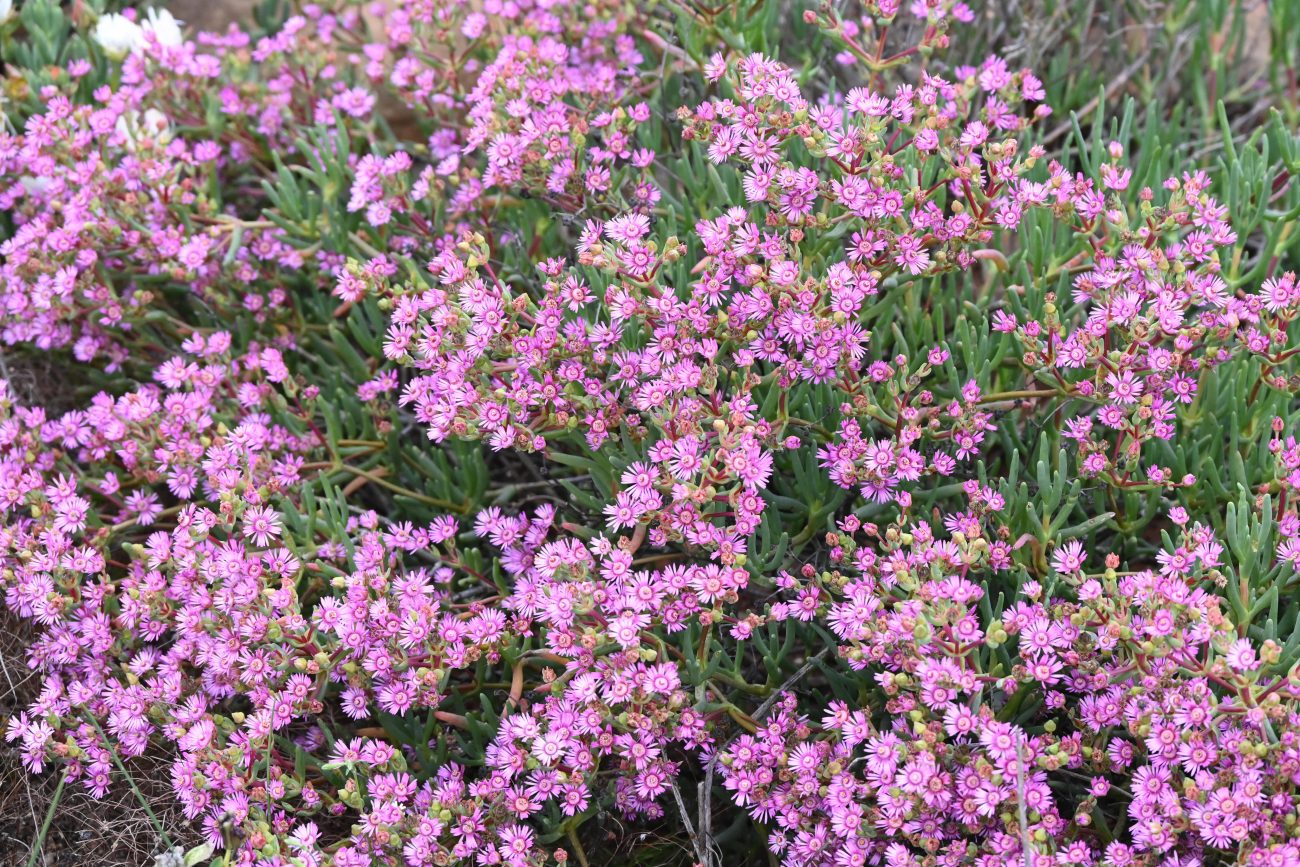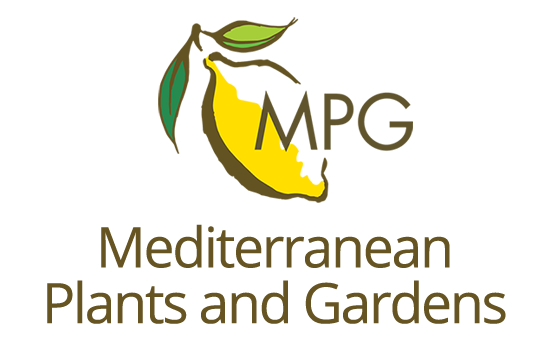Day 3 – Saturday 16 August
Maskam and Gifberg
We woke to a cool and drizzly morning, the mountain being shrouded in low cloud. Frank started the day by taking us to another of his known roadside spots, a rather unprepossessing side of the R27, the main road to Vrendendal!

View to Gifberg Mountain from our cabin at Maskam Guest Farm
Amongst the discarded glass and cans were many beautiful and interesting botanical discoveries growing in gravelly red soil. Some were good examples of plants adapted to the conditions of Succulent Karoo, such as Roepera morgsana with opposite pairs of glaucous, fleshy leaves. Ferraria variabilis demonstrated its name, with flowers on different plants varying from ochre, rusty-orange to black. Lessertia frutescens, the cancer bush has medicinal properties and the inflated seed pods are used in flower arrangements. We would see it again many times on tour, suggesting its tolerance to a variety of soil conditions. There were also lovely examples of Gorteria diffusa, the beetle daisy. This annual has much variability in flower form, including dark spots that are thought to be mimicry, attracting pollinating male bee flies (Megapalpus capensis), deceived to thinking the spots are females. A surprise was a large black and red koppie foam grasshopper, which feeds on Euphorbia and other plants in order to produce a defensive toxic foam.

Gladiolus venustus

Ferraria variabilis

Ferraria variabilis

Roepera morgsana

Foam grasshopper, Dictyophorus spumans

Gorteria diffusa

Lessertia frutescens
We enjoyed a stop at Kokerboom Kwerkery, a succulent nursery just outside Vanrhynsdorp, where Frank pointed out Portulacaria afra, the elephant bush, so named for its edible leaves attractive to elephants. It is often used as hedging because it is fast growing. We then visited a field outside town, known for its beautiful display of spring flowers including annual daisies Dimorphotheca pinnata and yellow Senecio, which prompted many oohs and aahs from the group.

Kokerboom Kwerkery

Field outside Vanrhynsdorp
We took a slow drive back for lunch at the farm, stopping frequently along the farm track. Plants included Berkheya spinosa, a shrub in a genus of mostly rosette-forming perennials.

Farm track, looking towards the Gifberg (Poison Mountain)

Gazania pectinata

Ruschia rubricaulis

Berkheya spinosa
After a hearty pie for lunch, Frank drove us up the steep pass to the top of the Gifberg or Maskam Mountain. It is also known as Poison Mountain, named after the gifboom (poison tree) that is endemic to the area.
Growing amongst the craggy rock outcrops and in sheltered ravines that looked like time had forgotten, the vegetation at this higher elevation changed to Fynbos, with protea, restios and tall Euryops abrotanifolius with striking yellow daisy flowers.

Flora along the Gifberg pass

Euryops abrotanifolius

On top of Poison Mountain

Protea glabra

Arctopus monocanthus

Crassula columnaris

Conophytum minosculum

Braunsia maximilianii

Braunsia maximilianii
The sun was setting as we departed and we enjoyed glorious views from the Gifberg pass down to Maskam. The clear, dark skies that night also enabled views of the Milky Way.

Sunset from Gifberg pass

Milky Way

